Related Research Articles

Bristol Zoo was a zoo in the city of Bristol in South West England. The zoo's stated mission was to "maintain and defend" biodiversity through breeding endangered species, conserving threatened species and habitats and promoting a wider understanding of the natural world".
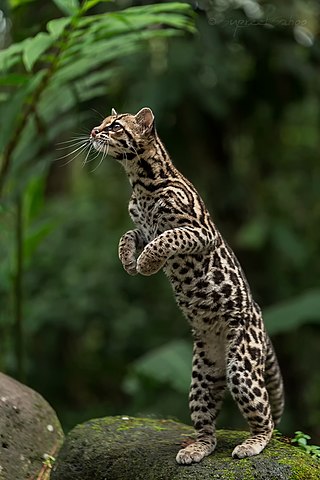
The margay is a small wild cat native to Central and South America. A solitary and nocturnal cat, it lives mainly in primary evergreen and deciduous forest.

The ocelot is a medium-sized spotted wild cat that reaches 40–50 cm (15.7–19.7 in) at the shoulders and weighs between 7 and 15.5 kg on average. It is native to the southwestern United States, Mexico, Central and South America, and the Caribbean islands of Trinidad and Margarita. Carl Linnaeus scientifically described it in 1758. Two subspecies are recognized.

Aransas National Wildlife Refuge is a 115,324-acre (466.7 km2) protected area situated on the southwest side of San Antonio Bay along the Gulf Coast of the U.S. state of Texas. It is located in parts of Aransas, Refugio, and Calhoun Counties. It is situated on the southwest side of the San Antonio Bay, formed by the mouth of the Guadalupe River. It also includes nearly the entirety of Matagorda Island, a 38-mile barrier island. The Aransas National Wildlife Refuge was established by Executive Order 7784 on 31 December 1937 by President Franklin D. Roosevelt as the Aransas Migratory Waterfowl Refuge as a refuge and breeding ground for migratory birds and other wildlife. Roosevelt issued a proclamation in 1940 changing the name to the Aransas National Wildlife Refuge.

Dallas Zoo is a 106-acre (43 ha) zoo located 3 mi (5 km) south of downtown Dallas, Texas, in Marsalis Park. Established in 1888, it is the oldest and largest zoological park in Texas and is managed by the non-profit Dallas Zoological Society. It is home to over 2,000 animals representing 406 species. It is an accredited member of the Association of Zoos and Aquariums (AZA), and is a member of the World Association of Zoos and Aquariums (WAZA).
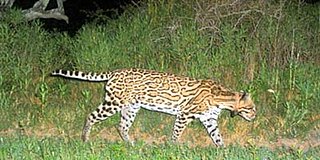
Laguna Atascosa National Wildlife Refuge is the largest protected area of natural habitat left in the Lower Rio Grande Valley. The 98,000-acre (400 km2) refuge is located almost entirely in Cameron County, Texas, although a very small part of its northernmost point extends into southern Willacy County.

The Western Gulf coastal grasslands are a subtropical grassland ecoregion of the southern United States and northeastern Mexico. It is known in Louisiana as the "Cajun Prairie", Texas as "Coastal Prairie," and as the Tamaulipan pastizal in Mexico.
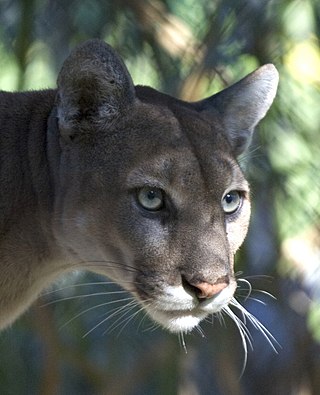
The Florida panther is a North American cougar population in South Florida. It lives in pinelands, tropical hardwood hammocks, and mixed freshwater swamp forests. It is known under a number of common names including Florida cougar, and Florida puma.
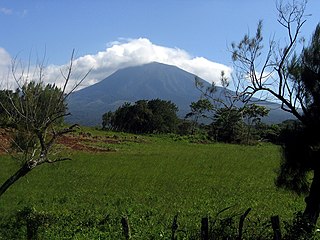
Guanacaste Conservation Area is an administrative area which is managed by the Sistema Nacional de Areas de Conservacion (SINAC) of Costa Rica for conservation in the northwestern part of Costa Rica. It contains three national parks, as well as wildlife refuges and other nature reserves. The area contains the Area de Conservación Guanacaste World Heritage Site, which comprises four areas.

The wildlife of the Democratic Republic of the Congo includes its flora and fauna, comprising a large biodiversity in rainforests, seasonally flooded forests and grasslands.
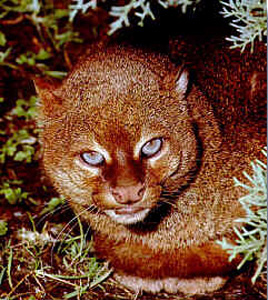
The Gulf Coast jaguarundi is an endangered population of the jaguarundi once ranging from southern Texas in the United States to eastern Mexico. The cat prefers dense shrubland and woodland, yet has been hampered by habitat loss. Since 2017, this population is no longer recognised as a jaguarundi subspecies.
The World Birding Center is the official title given to a combined nine parks and nature preserves in the Rio Grande Valley region of Texas managed by a partnership of the Texas Parks and Wildlife Department, the United States Fish and Wildlife Service, and the local communities in which the parks reside. The stated mission of the World Birding Center is to "protect native habitat while increasing the understanding and appreciation of the birds and wildlife", with an additional emphasis on promoting local economic development through ecotourism.

The Tamaulipan mezquital is a deserts and xeric shrublands ecoregion in the Southern United States and northeastern Mexico. It covers an area of 141,500 km2 (54,600 sq mi), encompassing a portion of the Gulf Coastal Plain in southern Texas, northern Tamaulipas, northeastern Coahuila, and part of Nuevo León.

The Bill Williams River National Wildlife Refuge protects the lower course of the Bill Williams River, to its mouth at Lake Havasu reservoir, in western Arizona. It is located within eastern La Paz and Mohave Counties, in the Lower Colorado River Valley region.

The Great Texas Coastal Birding Trail is a state-designated system of trails, bird sanctuaries, and nature preserves along the entire length of the Texas Gulf Coast in the United States. As the state of Texas hosts more bird species than any other state in the U.S. the trail system offers some of the most unusual opportunities for bird-watching in the world. The "trail" is actually 43 separate hiking and driving trails that include 308 birding sites. The sites themselves feature a variety of viewing opportunities with boardwalks, observation decks, and other amenities. The trails boast more than 450 bird species. The trail system is managed by the Texas Parks and Wildlife Department as part of the Great Texas Wildlife Trails which also include the Heart of Texas Wildlife Trail, the Panhandle Plains Wildlife Trail, and the Prairies and Pineywoods Wildlife Trail.

The Laguna Madre is a long, shallow, hypersaline lagoon along the western coast of the Gulf of Mexico in Nueces, Kenedy, Kleberg, Willacy and Cameron Counties in Texas, United States. It is one of seven major estuaries along the Gulf Coast of Texas. The roughly 20-mile (32 km) long Saltillo Flats land bridge divides it into Upper and Lower lagoons joined by the Intracoastal Waterway, which has been dredged through the lagoon. Cumulatively, Laguna Madre is approximately 130 miles (210 km) long, the length of Padre Island in the US. The main extensions include Baffin Bay in Upper Laguna Madre, Red Fish Bay just below the Saltillo Flats, and South Bay near the Mexican border. As a natural ecological unit, the Laguna Madre of the United States is the northern half of the ecosystem as a whole, which extends into Tamaulipas, Mexico approximately 144 miles (232 km) south of the US border, to the vicinity of the Rio Soto La Marina and the town of La Pesca, extending approximately 275 miles (443 km) through USA and Mexico in total.

Rio Grande Valley Ocelots FC were an American soccer team based in Brownsville, Texas, United States. Ocelots FC was founded in 2010 and competed in the Southern Premier Soccer League's single 2010–11 season of existence. The team played its home games at Brownsville Sports Park.
The Vancouver Orphan Kitten Rescue Association (VOKRA) is a no kill, non-profit cat rescue organization in Vancouver, British Columbia, Canada, providing trap–neuter–return services to Vancouver and nearby communities.
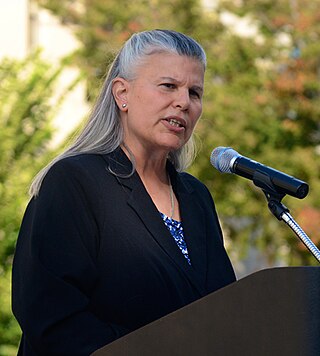
Jamie Rappaport Clark is an American conservationist and former government official working as the president and CEO of Defenders of Wildlife. She joined the organization as executive vice president in 2004.
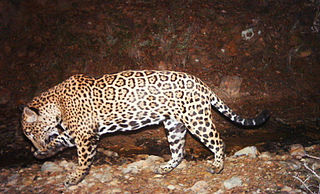
The North American jaguar is a jaguar population in North America, ranging from the Southwestern United States to Central America. They are most associated to Central and South America. This population has declined over decades and was almost extirpated from the United States by 1960.
References
- 1 2 3 People Who Make A Difference: Hilary Swarts, KVEO-TV, September 19, 2017, retrieved 2017-11-29
- 1 2 3 4 5 6 7 Sommers, Kayleigh (October 30, 2013), "Call of the Wild: Hilary Swarts", Valley Morning Star, retrieved 2017-11-29
- 1 2 3 4 5 6 7 8 9 Shakespeare, Margaret (April 10, 2017), "Ocelot Country: In the endangered ocelot's struggle for survival, the little cat's best friend may be Hilary Swarts '94", Pomona College Magazine, Pomona College, retrieved 2017-11-29
- ↑ Degollado, Jessie (November 15, 2016), $8 million road-construction project aimed at saving rare ocelots: Project is first such attempt to protect endangered cats, KSAT-TV
- ↑ First Ocelot Den Discovered in 20 Years at Laguna Atascosa National Wildlife Refuge, United States Fish and Wildlife Service, December 19, 2016, retrieved 2017-11-29
- ↑ Petri, Alexandra E. (December 28, 2016), "Rare Ocelot Kittens Caught on Camera", National Geographic